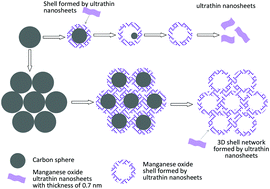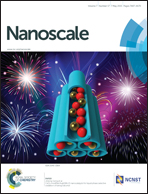Three-dimensional honeycomb-like networks of birnessite manganese oxide assembled by ultrathin two-dimensional nanosheets with enhanced Li-ion battery performances†
Abstract
Three-dimensional (3D) honeycomb-like birnessite networks composed of ultrathin two-dimensional (2D) nanosheets were firstly synthesized through a facile and low-cost synthetic route. By using carbon microspheres as a template instead of graphene, hierarchical birnessite structures assembled by ultrathin nanosheets including york–shell and hollow structures were obtained besides the ultrathin birnessite nanosheets with a thickness of about 0.7 nm. By assembling carbon spheres into an ordered 3D array, novel 3D honeycomb-like birnessite structures assembled by ultrathin nanosheets were firstly prepared. When evaluated as an anode material for Li-ion batteries, the 3D honeycomb-like networks show enhanced electrochemical performances with high capacities, excellent cycling stability and good rate capability, which can be ascribed to the novel 3D honeycomb-like macroporous structure with a 3D inverse opal structure, well-ordered macropores, interconnected walls and a regular periodicity.


 Please wait while we load your content...
Please wait while we load your content...